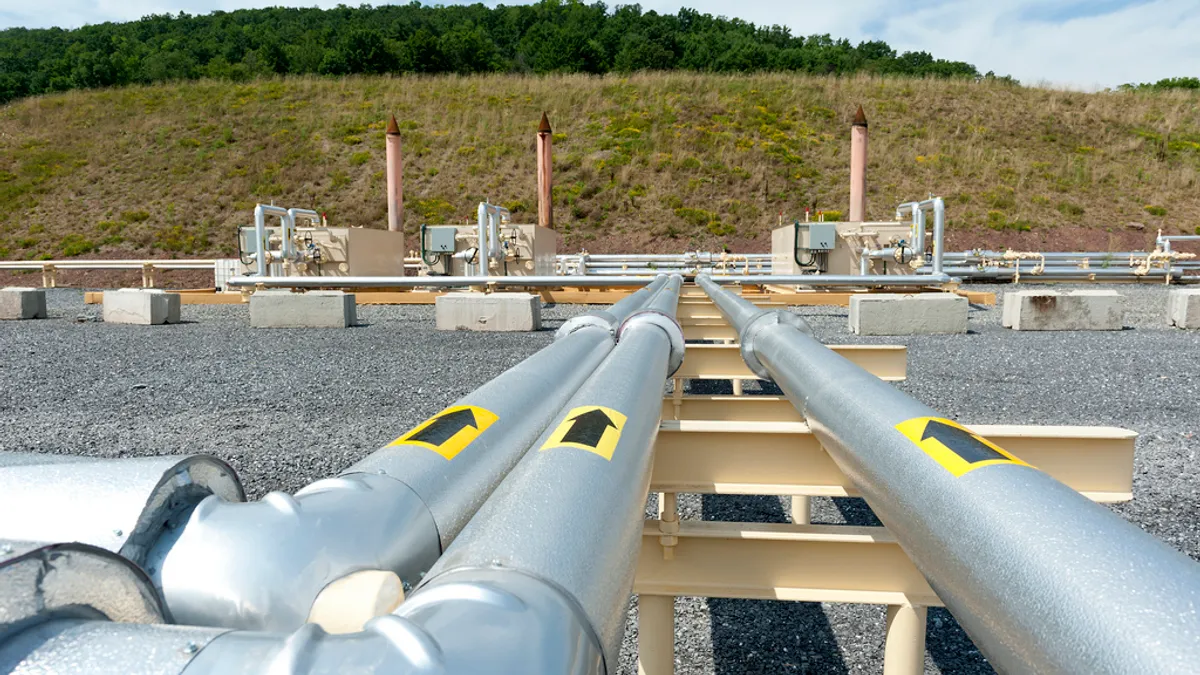Dive Brief:
- Increased Marcellus Shale production is causing the natural gas industry to alter flows across its pipeline system to allow bidirectional shipping of up to 8.3 Bcf/d out of the region, Breaking Energy reports.
- According to the U.S. Energy Information Administration, 32% of pipeline capacity into the Northeast could be bidirectional by 2017.
- In 2013 the industry was capable of moving 25 Bcf/d of natural gas from Canada, the Midwest, and the Southeast into the Northeast.
Dive Insight:
Growing natural gas production in Pennsylvania, West Virginia, and Ohio has the natural gas industry looking for new ways to move supplies out of the region. Modifying existing pipeline to enable bidirectional flow requires significantly less capital investment, fewer regulatory permits, and lower construction and labor costs, and according to the EIA the industry has plans for 8.3 Bcf/d of bidrectional flow out of the region.
"Existing long-haul pipeline capacities to flow gas into the Northeast are underutilized. Modifying these systems to be bidirectional can be executed quickly to respond to new market dynamics that will improve pipeline utilization rates," EIA said.
The agency noted that flows on ANR Pipeline, Texas Eastern Transmission, Transcontinental Pipeline, Iroquois Gas Pipeline, Rockies Express Pipeline, and Tennessee Gas Pipeline accounted for 60% of flows to the Northeast in 2013. However, flows dropped last year 21% to 84% below 2008 levels, with the largest declines occurring on the Tennessee Gas Pipeline.
In 2014, the Tennessee Gas Pipeline and the Texas Eastern Transmission began flowing gas both ways between states along the Northeast and Southeast region borders.
ANR Pipeline, Tennessee Gas, Texas Eastern and Transcontinental Gas Pipeline are planning to send natural gas from the Northeast to the Gulf Coast because of the potential of industrial demand and liquefied natural gas exports. According to the EIA, those projects total 5.5 Bcf/d of flow capacity. The Rockies Express Pipeline's partial bidirectional project (2.5 Bcf/d of capacity) is primarily to flow Marcellus natural gas to more attractive markets in Chicago, Detroit, and the Gulf Coast.















